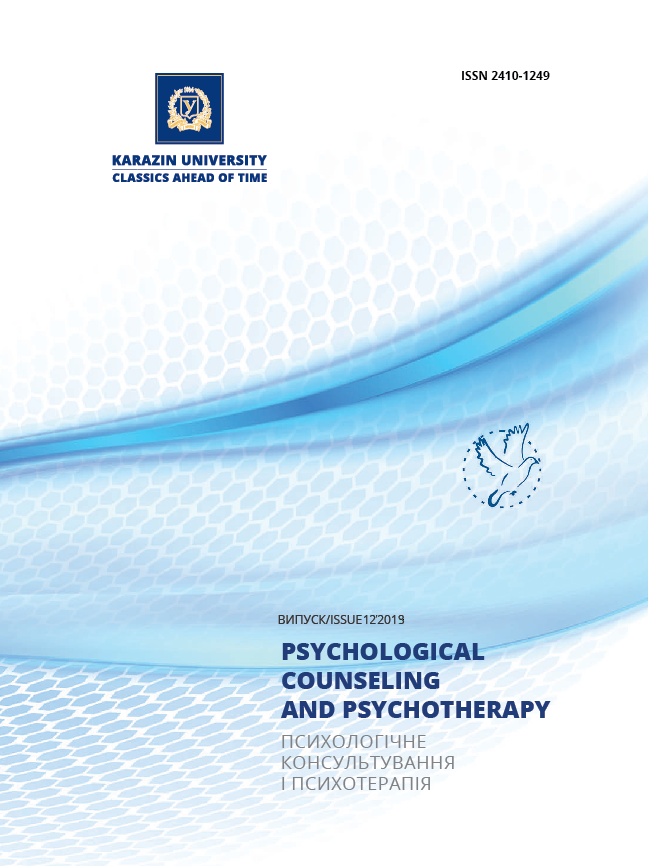Hypersexuality in the Form of Porno Addiction: Clinical Observation
Abstract
The article reports on the categories, which are related to hypersexuality and contained in the International Classification of Diseases, 10th Revision (ICD-10) (1994), the American Diagnostic and Statistical Manual of Mental Disorders, Fifth Edition (DSM-5) (2013) and the ICD-11 project (Kraus Shane W. et al., 2018). Also, 4 conceptualizations of hypersexuality are named: obsessive-compulsive (Bancroft J., Vukadinovic Z., 2004), addictive (Carnes P., 1983), due to an impaired control of impulses (Kraus Shane W. et al., 2016) as well as associated with the persistent sexual arousal syndrome / the persistent genital arousal disorder and the restless genital syndrome (Kocharyan G.S., 2019). A clinical observation, made by the author, is presented; in his opinion, it corresponds with the model of hypersexuality as sexual addiction (porn addiction), though when comparing criteria of sexual addiction and compulsive disorder of sexual behaviour, which was included into the ICD-11 project (Kraus Shane W. et al., 2018), a conclusion can be drawn about their correspondence. During his first visit a 32-year-old man complained of continuously disturbing thoughts about sex and a difficult control of sex impulses, which were realized during masturbation, 80% of its cases occurring with use of Internet porn. He masturbated every day or on alternative days mostly at work, as he was alone at his place of work. He watched clips with different heterosexual plots (vaginal and oral sexual intercourses), sadomasochist and lesbian subject matters as well as clips where a woman copulated with a dog. Due to his problem, which appeared when he was 18, the patient felt constant depression since the age of 22. Interestingly, it was difficult for the patient to connect with females. His last sexual intercourse was at the age of 25. Hypnosuggestive therapy in the variant of programming was the basic method of treatment of the patient. Suggestions were made, they being focused on: reduction/elimination of the compulsion for masturbation and porn (particularly its non-normative variants); increase of the sexual drive to real women in real life; increase of a possible control over sexual addictive impulses; easiness in communication with women; mood improvement. All in all, 7 hypnosis sessions were conducted, as the patient could not continue his treatment due to objective reasons. It is noted that the patient had porn addiction, which was supported by his difficulty in connecting females. The above addiction was well controlled with help of hypnosuggestive therapy (the basic method of treatment) supplemented with reading of religious and philosophic literature, which made it possible to weaken addictive drives by distraction (an auxiliary therapeutic effect). The patient’s set that it was necessary to keep almost complete sexual abstinence which, in his opinion, was useful for his organism, resulted in the situation that sexual drives and their realization, which appeared much less often that before the treatment and were even more than “within the normative line”, were perceived by him as addictive, though really they were not any more. Due to an insufficient duration of the treatment one cannot exclude a possibility of the patient’s gradual “sliding” into sexual addiction (porn addiction), this fact necessitating the control of his state.
Downloads
References
Kocharyan G.S. (2019). Гиперсексуальность: термины, диагностические подходы, концептуализация, распространенность [Hypersexuality: terms, diagnostic approaches, conceptualization, prevalence], Zdorov’ye muzhchiny, 2(69), 61–68, https://doi.org/10.30841/2307-5090.2.2019.179977 (in Russian)
Международная классификация болезней (10-й пересмотр). Классификация психических и поведенческих расстройств. Клинические описания и указания по диагностике [International Classification of Diseases (10th revision). Classification of mental and behavioral disorders. Clinical descriptions and diagnostic instructions] (1994). Sankt-Petersburg: ADIS, p. 304. (in Russian)
Bancroft J., Vukadinovic Z. (2004). Sexual addiction, sexual compulsivity, sexual impulsivity, or what? Toward a theoretical model, J Sex Res., 41(3), 225 234.
Carnes P. (1983). Out of the shadows: Understanding sexual addiction. Minneapolis, MN: CompCare.
Diagnostic and Statistical Manual of Mental Disorders. Fifth Edition. (2013). United States: American Psychiatric Association, 2013, p. 947.
Kraus Shane W., Krueger Richard B., Briken Peer, First Michael B., Stein Dan J., Kaplan Meg S., Voon Valerie, Abdo Carmita H. N., Grant Jon E., Atalla Elham, Reed Geoffrey M. (2018). Compulsive sexual behaviour disorder in the ICD‐11, World Psychiatry, 17(1), 109–110. https://doi.org/10.1002/wps.20499.
Kraus Shane W., Voon Valerie, Potenza Marc N. (2016). Should compulsive sexual behavior be considered an addiction? Addiction, 111(12), 2097–2106.








